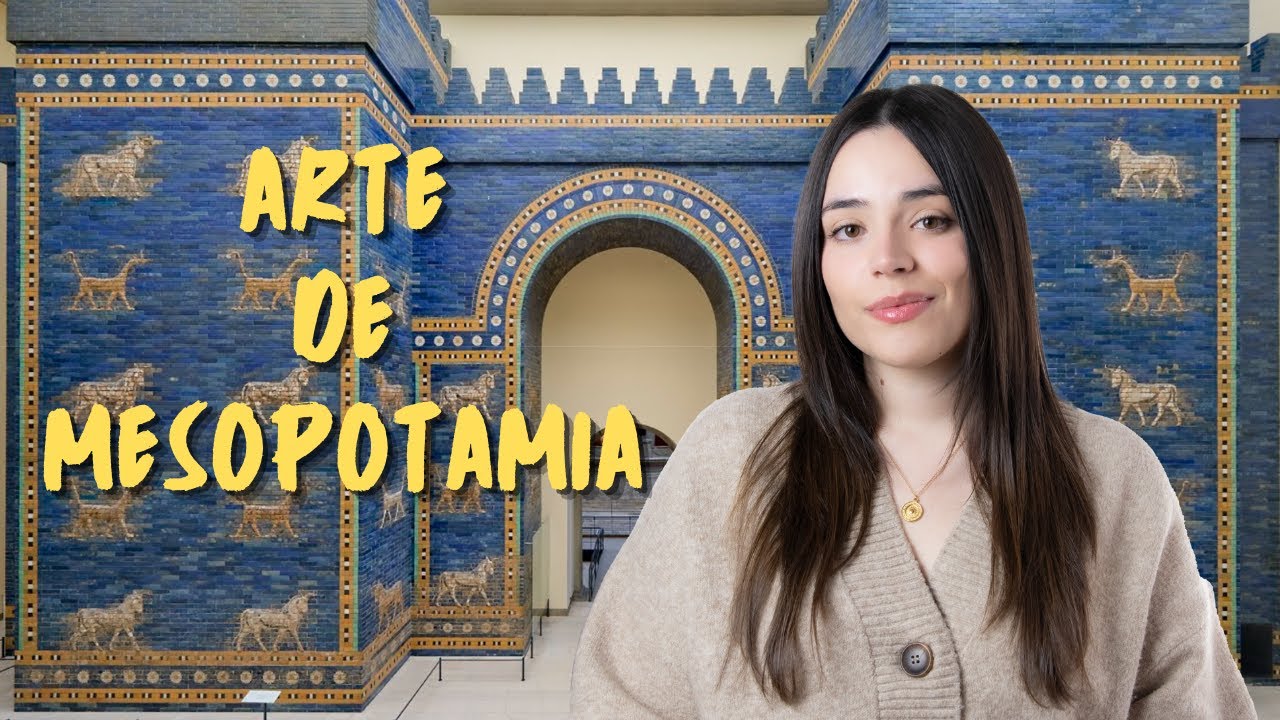Ancient Sumer City-States
Summary
TLDRThe ancient Sumerian city-states, located between the Tigris and Euphrates rivers, flourished from 4000 BC to 2000 BC, marking the beginnings of human civilization. These city-states, such as Ur, Eridu, and Uruk, were centers of monumental achievements in agriculture, governance, art, and the invention of cuneiform writing. They played a key role in shaping Mesopotamian culture, with significant sites like the Ziggurat of Ur and the Royal Cemetery. Despite challenges in archaeological interpretation, their influence endures, laying the foundation for future civilizations.
Takeaways
- 🏙️ The Sumerian city-states, located between the Tigris and Euphrates rivers in Mesopotamia, are considered the Cradle of Civilization, thriving from 4000 BC to 2000 BC.
- 🎨 These city-states were monumental in art, governance, and culture, with each city having distinct characteristics, such as the grandeur of the ziggurats.
- 📜 Sumerians made significant advancements, including the invention of cuneiform writing and the development of complex social structures.
- 🏛️ Ur, a major Sumerian city-state, flourished during the Third Dynasty and was known for its economic prosperity, trade, and the Great Ziggurat dedicated to the moon god, Nanna.
- 🌍 Eridu, considered one of the oldest Sumerian cities, is linked to Enki, the god of wisdom and water, and believed to be the site of the first temple.
- 🏺 The Royal Cemetery of Ur is an important archaeological site where the famous Standard of Ur was discovered in the 1920s.
- 🏰 Uruk, one of the earliest cities in history, was a major trade and cultural center, associated with Gilgamesh and known for its advanced urban planning.
- ⚔️ Lagash, ruled by Gudea around 2240 BC, was notable for prosperity and cultural achievements but also engaged in conflicts with Umma over agricultural land.
- ⛪ Nippur served as a major religious center dedicated to the god Enlil and played a central role in religious and administrative activities in Sumer.
- 🌊 Shuruppak, associated with the Epic of Ziusudra, was the city where the Sumerian Noah survived the great flood, symbolizing resilience in Sumerian mythology.
Q & A
What geographical area did the ancient Sumerian city-states occupy?
-The ancient Sumerian city-states were located between the Tigris and Euphrates rivers in Mesopotamia, an area often referred to as the Cradle of Civilization.
What time period did the Sumerian city-states flourish in?
-The Sumerian city-states flourished from around 4,000 BC to 2,000 BC.
What were some of the key achievements of the Sumerian city-states?
-The Sumerians made monumental achievements in art, governance, and culture, including advances in agriculture, the invention of writing (cuneiform script), and the development of intricate social structures.
What is the significance of the city-state of Ur?
-Ur was known for its economic prosperity, trade, and the Great Ziggurat dedicated to the Moon god Nanna. It also houses the Royal Cemetery of Ur, where significant archaeological discoveries, such as the Standard of Ur, were made.
Who was Gilgamesh, and which city-state is he associated with?
-Gilgamesh is a legendary figure in Sumerian literature, often associated with the city-state of Uruk, one of the earliest and most significant cultural and trade centers.
What role did Lagash play in Sumerian history?
-Lagash was known for its prosperity under the rule of Gudea (around 2,144 to 2,124 BC) and was involved in conflicts with the city-state of Umma over agricultural land, as depicted in the Stele of the Vultures.
What was the religious significance of Nippur in Sumerian culture?
-Nippur was a major religious center dedicated to the god Enlil, home to the Ekur temple, and played an important role in Sumerian creation myths and religious activities.
Why is the city of Kish historically important in Sumerian texts?
-Kish is mentioned in early Sumerian texts, including the Sumerian King List, and is considered one of the early urban centers credited with a key role in the development of early kingship.
What is the historical significance of Eridu?
-Eridu is often considered one of the oldest Sumerian cities, associated with the god Enki (god of wisdom and water) and believed to be the site of the first temple in Sumer.
How did the Sumerian city-states influence later civilizations?
-The Sumerian city-states laid the groundwork for advanced civilizations by contributing innovations such as writing, urban planning, religious practices, and governance, which influenced the trajectory of civilizations that followed in the ancient world.
Outlines

هذا القسم متوفر فقط للمشتركين. يرجى الترقية للوصول إلى هذه الميزة.
قم بالترقية الآنMindmap

هذا القسم متوفر فقط للمشتركين. يرجى الترقية للوصول إلى هذه الميزة.
قم بالترقية الآنKeywords

هذا القسم متوفر فقط للمشتركين. يرجى الترقية للوصول إلى هذه الميزة.
قم بالترقية الآنHighlights

هذا القسم متوفر فقط للمشتركين. يرجى الترقية للوصول إلى هذه الميزة.
قم بالترقية الآنTranscripts

هذا القسم متوفر فقط للمشتركين. يرجى الترقية للوصول إلى هذه الميزة.
قم بالترقية الآنتصفح المزيد من مقاطع الفيديو ذات الصلة

Brief History of Ancient Mesopotamia - Fertile Crescent & The cradle of civilization | 5 MINUTES

Seperti apa Peradaban Babilonia?

I Sumeri - Scuola Primaria - Classe 4° || Storia

Ancient Mesopotamia for Kids | Learn all about the history of ancient Mesopotamia

Arte na MESOPOTÂMIA - Sumérios, Babilônios, Acádios e Assírios - História da arte

MESOPOTAMIA, el ARTE de las PRIMERAS CIVILIZACIONES de la HISTORIA | OBRAS y CARACTERÍSTICAS
5.0 / 5 (0 votes)
